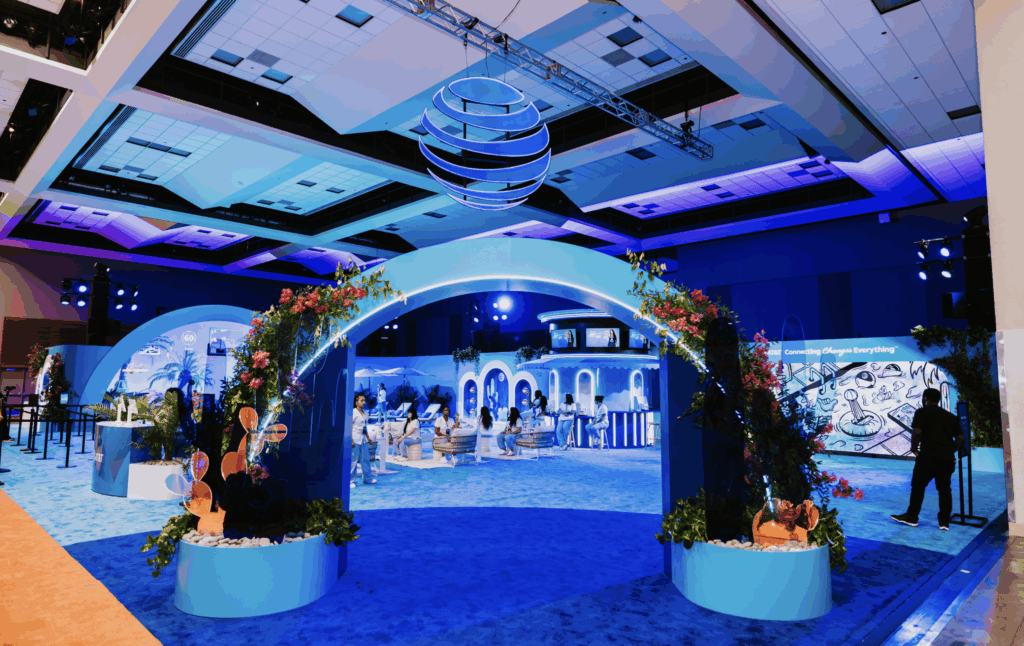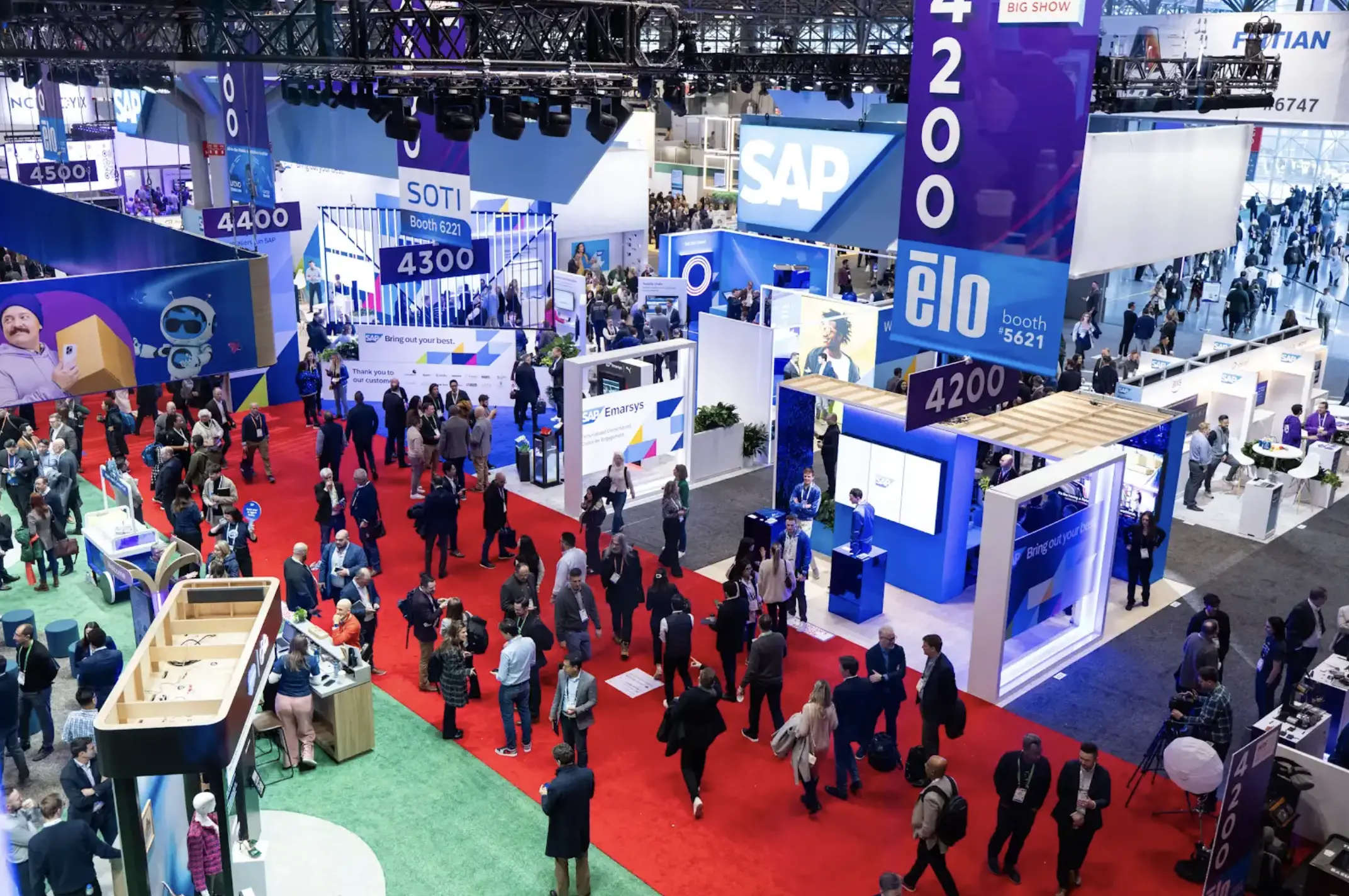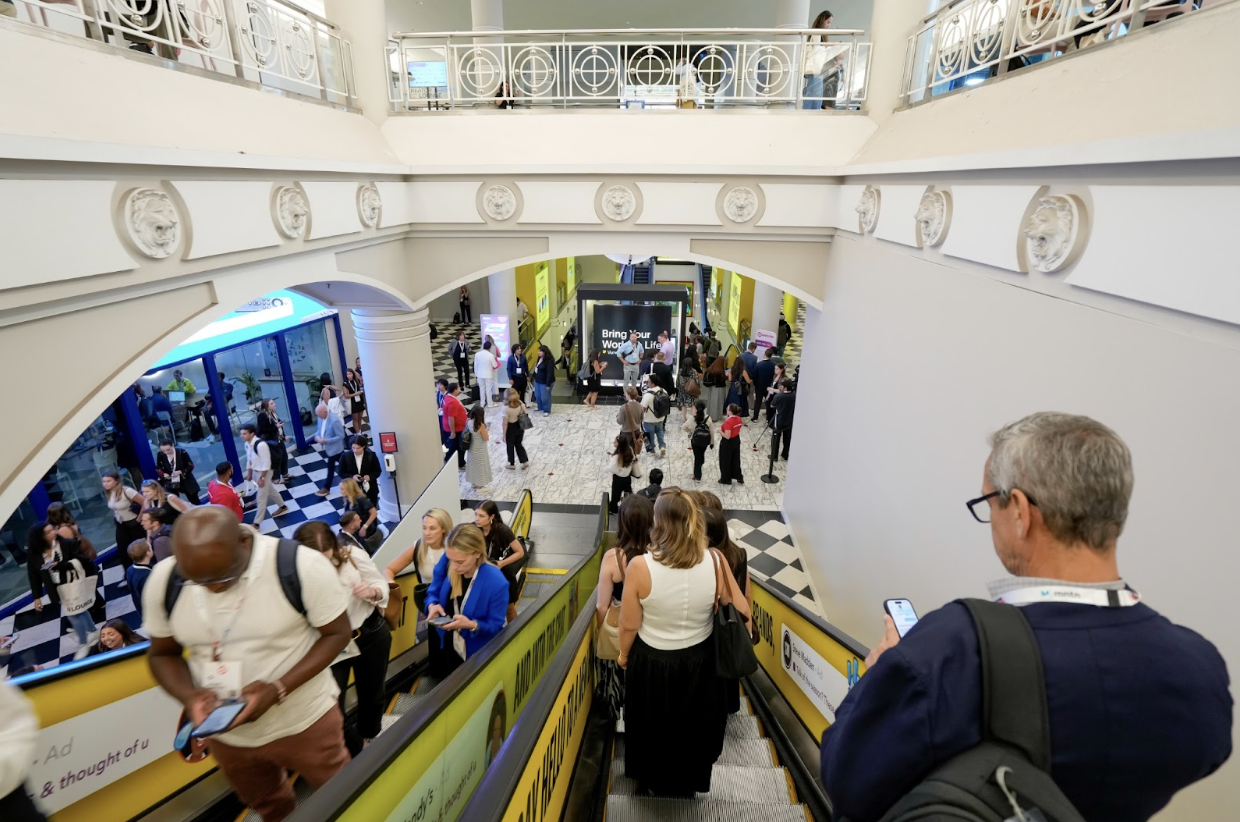Bluewater Technologies is an audiovisual company that turned 40 this year. Over the course of four decades, it’s changed its name from BlueWater Visual Services, moved its operations out of its co-founder, Paul Rose’s, garage to a corporate HQ in Michigan and developed a client roster that includes the likes of Foot Locker, Nordstrom, Disney and Forbes, just to name a few.
Perhaps what has made Bluewater Technologies so successful is that, despite having tech in its name, it prioritizes people. Its managing partner, Scott Schoeneberger, even told Vendelux that
“immersion isn’t about technology; it’s about engagement.”
It’s refreshingly human considering artificial intelligence’s growing role in virtually every industry.
Event professionals can’t ignore tech, though, especially when they’re niche in immersive AV experiences, like they are at Bluewater Technologies. So, where does it come into play? And how do event profs ensure that high-tech moments enhance immersivity rather than take away from the experience?
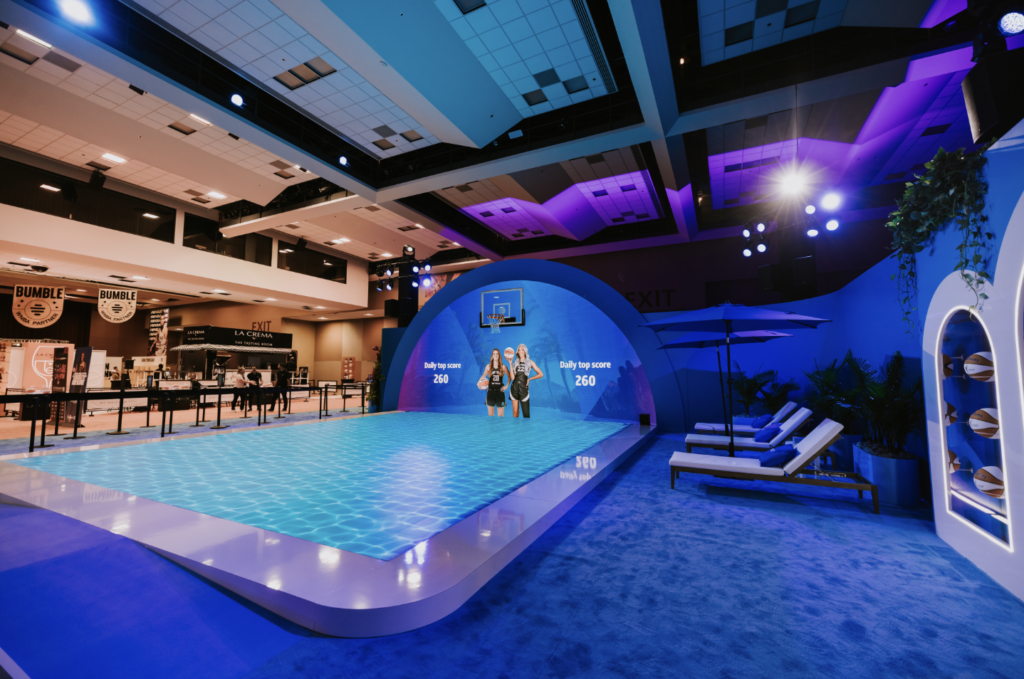
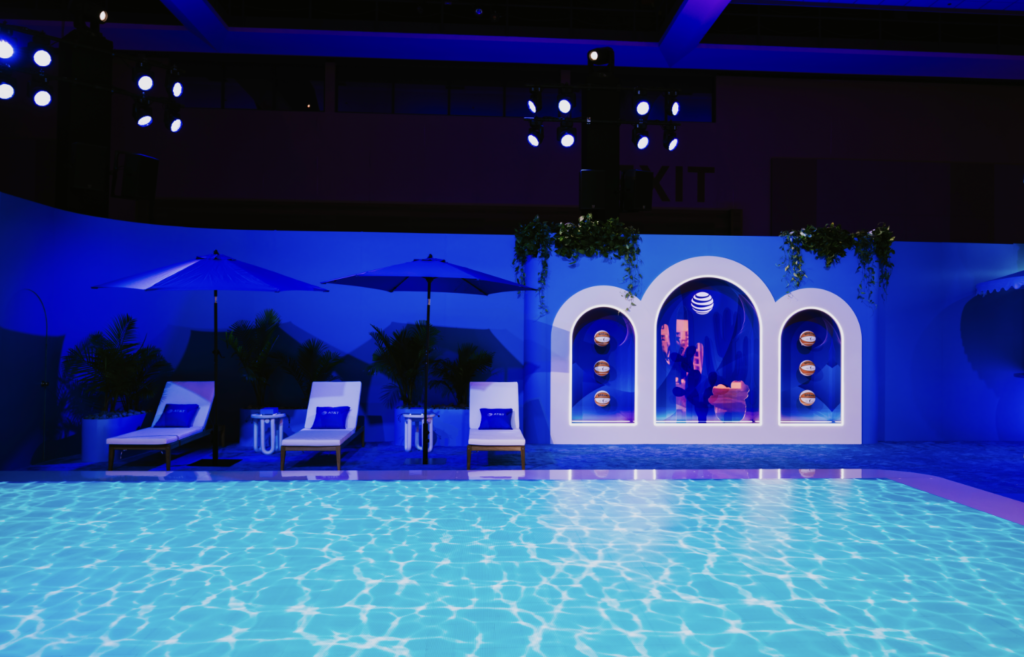
First, understand what a truly immersive experience means. According to Schoeneberger, it
“goes beyond visuals or interactivity. It engages multiple senses, creates a feeling of presence and tells a compelling story. It surrounds people.”
Schoeneberger said the best immersive experiences are “layered,” incorporating “a mix of spatial design, lighting, sound and interaction to transport audiences into another world, even if just for a moment.”
“Layered” can also come in the form of what Schoeneberger described as “different tracks,” or areas to explore—again with the goal of taking attendees on a journey.
It’s in these immersive environments that event profs can play with interactivity (which, yes, is different from immersivity). “Interactive means that an audience has an active role in engaging with the experience,” Schoeneberger explained. “It could be pressing a button, making a choice or physically participating in another way.”
“Something can be immersive without being interactive, but the two often go hand in hand to create deeper engagement,”
Schoeneberger said, pointing to the AT&T Fan Zone that Bluewater Technologies produced at WNBA Live as an example of their relationship. The installation—which came to life in Phoenix in July 2024—was immersive for its 28-by-13-foot LED wall and 24-by-30-foot LED floor combo that transported guests onto a water-themed basketball court. (Branded courtside lounge chairs made for a nice touch.)
The Fan Zone was interactive, however, thanks to on-court events like the “Court Challenge with A’ja Wilson and Sabrina Ionescu” that invited guests to shoot hoops to win pool floats corresponding to WNBA stars. Charging stations at the pool lounges made for an inviting touchpoint that actually encouraged guests to kick their feet up and interact with the space. And an on-site nail salon was the perfect addition not only to get vacay ready with WNBA-themed nail art, but to also offer a customizable element.
It was only fitting that the blend of immersivity and interactivity was the highlight of the Fan Zone.
“By blending interactive technology with strong storytelling and pop culture tie-ins, we created a space where fans didn’t just observe, they actively participated,”
Schoeneberger said, noting that “engagement levels were off the charts.”
One of the greatest challenges of the Fan Zone—and in general of infusing so much tech into a live experience—was “accessibility,” per Schoeneberger. Specifically, every attendee needed to feel comfortable engaging with the experience “regardless of familiarity with technology,” he said.
And the solution wasn’t to make things more high tech or more expensive, Schoeneberger said—noting that these are two misconceptions about immersive experiences today. Rather, the solution was two fold (and quite human-centric): One, having event profs ensure ahead of time that all techy elements had an “intuitive design.” And two, hiring on-site “ambassadors who could guide guests through each activation, ensuring a seamless and enjoyable experience,” Schoeneberger said.
To other event profs who may be fearful of leaning further on tech for fear of isolating consumers who aren’t so tech savvy—or of outages and other technical difficulties—Schoeneberger said: “The best events build in redundancy and fail-safes to ensure that if something goes wrong, the experience still holds up. This is true across the event—speakers, catering, the venue and tech. If you’re looking to use complex technology as a layer of your event and are wary of it because you aren’t comfortable or familiar with it, just make sure you hire professionals who have experience in that space.”
Those professionals will know that “thoughtful design, compelling storytelling and intentional use of space can create a powerful immersive experience without a massive budget [or] flashy tech,” Schoeneberger said, pointing to LED walls, projection mapping and AI-driven experiences. These forms of flashy tech can all be “breathtaking, and will certainly draw a crowd (even just for a minute),” but may not always be truly engaging.
“Immersive art installations that pop up across the country only to seemingly disappear overnight are a testament to this,” Schoeneberger said.
“Technology alone doesn’t make for a great immersive experience.”
